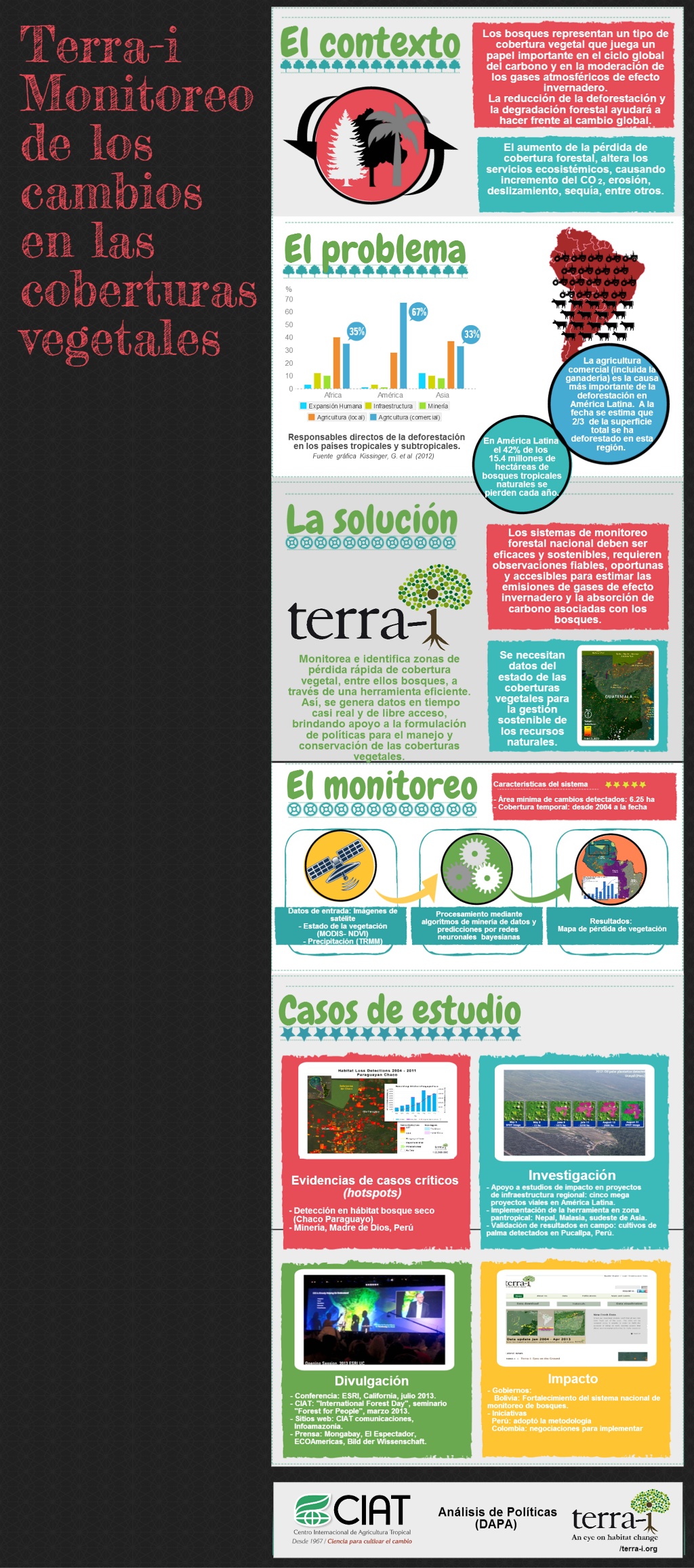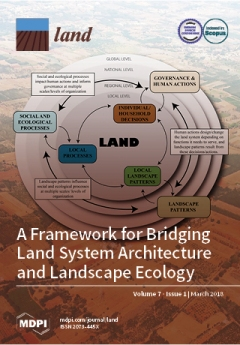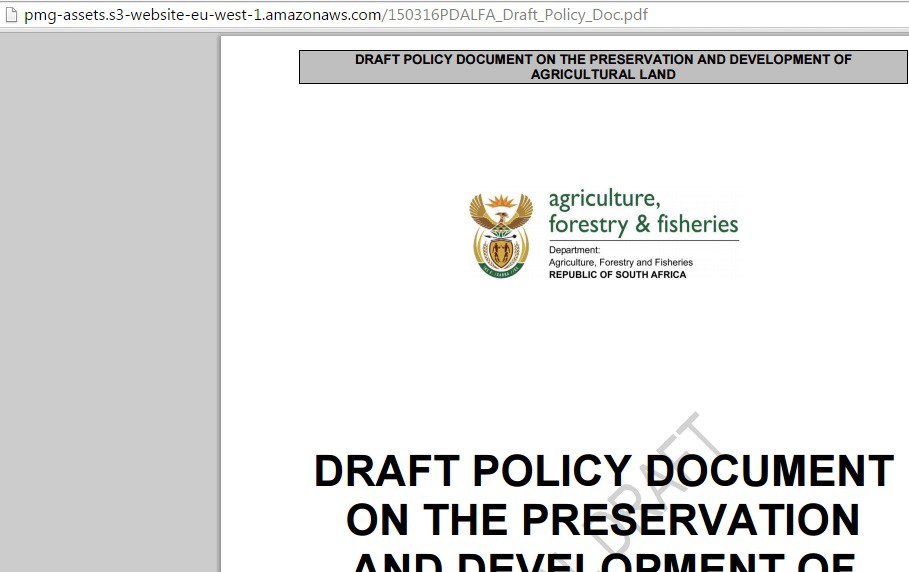cobertura do solo
AGROVOC URI:
Mapping Urban Green Infrastructure: A Novel Landscape-Based Approach to Incorporating Land Use and Land Cover in the Mapping of Human-Dominated Systems
Common approaches to mapping green infrastructure in urbanised landscapes invariably focus on measures of land use or land cover and associated functional or physical traits. However, such one-dimensional perspectives do not accurately capture the character and complexity of the landscapes in which urban inhabitants live. The new approach presented in this paper demonstrates how open-source, high spatial and temporal resolution data with global coverage can be used to measure and represent the landscape qualities of urban environments.
Forest Cover Change, Key Drivers and Community Perception in Wujig Mahgo Waren Forest of Northern Ethiopia
This study assessed forest cover change from 1985 to 2016, analyzed community perception on forest cover change and its drivers, and suggested possible solutions in northern Ethiopia. Landsat images of 1985, 2000 and 2016, household interviews and focus group discussions were used. While dense forests and open forests increased by 8.2% and 32.3% respectively between 1985 and 2000, they decreased by 10.4% and 9.8% respectively from 2000 to 2016. Grasslands and cultivated land decreased in the first period by 37.3% and 5.5% but increased in the second period by 89.5% and 28.5% respectively.
Improving Object-Based Land Use/Cover Classification from Medium Resolution Imagery by Markov Chain Geostatistical Post-Classification
Land use/land cover maps derived from remotely sensed imagery are often insufficient in quality for some quantitative application purposes due to a variety of reasons such as spectral confusion. Although object-based classification has some advantages over pixel-based classification in identifying relatively homogeneous land use/cover areas from medium resolution remotely sensed images, the classification accuracy is usually still relatively low.
Post-War Land Cover Changes and Fragmentation in Halgurd Sakran National Park (HSNP), Kurdistan Region of Iraq
Context: The fundamental driving force of land use and land cover (LULC) change is related to spatial and temporal processes caused by human activities such as agricultural expansion and demographic change. Landscape metrics were used to analyze post-war changes in a rural mountain landscape, the protected area of Halgurd-Sakran National Park (HSNP) in north-east Iraq. Therefore, the present work attempts to identify the temporal trends of the most fragmented land cover types between two parts of the national park.
Monitoring and Analysing Land Use/Cover Changes in an Arid Region Based on Multi-Satellite Data: The Kashgar Region, Northwest China
In arid regions, oases ecosystems are fragile and sensitive to climate change, and water is the major limiting factor for environmental and socio-economic developments. Understanding the drivers of land use/cover change (LUCC) in arid regions is important for the development of management strategies to improve or prevent environmental deterioration and loss of natural resources.
Land Use and Land Cover Changes and Their Effects on the Landscape of Abaya-Chamo Basin, Southern Ethiopia
This study uses a combination of remote sensing data, field interviews and observations, and landscape indices to examine the dynamics of land use and land cover (LULC), identify their driving forces, and analyze their effects on the landscape of Abaya-Chamo Basin (ACB) between 1985, 1995, and 2010. The results reveal that the landscape of ACB has changed considerably during the past 25 years between 1985 and 2010. The main changes observed imply a rapid reduction in shrubland (28.82%) and natural grassland (33.13%), and an increase in arable land (59.15%).
Urban Land Cover Change in Ecologically Fragile Environments: The Case of the Galapagos Islands
The Galapagos Islands are a unique sanctuary for wildlife and have gone through a fluctuating process of urbanization in the three main inhabited islands. Despite being colonized since the 1800s, it is during the last 25 years that a dramatic increase in population has been observed. Analyzing impervious surface change over this period in an ecologically fragile environment is a challenging task, thus two methods that have been widely employed in studying urban environments were compared in this study: sub-pixel using spectral mixture analyses (SMA) and object-based classification.
Causes of informal settlements in Ekurhulen metropolitan municipality: An Exploration
This article aims to explore the causes of informal settlements in Ekurhuleni Metropolitan Municipality (EMM). The article strongly challenges the view that the cause of informal settlements in EMM and other parts of South Africa is predominantly the apartheid government and agrees with literature which provides evidence that to a larger extent, the present government, not the apartheid government, is one of the dominant causes of informal settlements.
Draft policy document on the preservartion and developemnt of agricultural land
The preservation, development and sustainable use of agricultural land are of vital importance to ensure long-term food security. On a global level, food security is closely linked to Goal 1 of the Millennium Development Goals, namely to eradicate extreme poverty and hunger by, amongst others, halving, between 1990 and 2015, the proportion of people who suffer from hunger.
The Standardization and Harmonization of Land Cover Classification Systems towards Harmonized Datasets: A Review
A number of national, regional and global land cover classification systems have been developed to meet specific user requirements for land cover mapping exercises, independent of scale, nomenclature and quality. However, this variety of land-cover classification systems limits the compatibility and comparability of land cover data.






